Exhibits The NAEB and the NETRC
That the NAEB and the Educational Television and Radio Center should have a strong relationship was presumed from the start. The NAEB had collaborated in 1952 with the Fund for Adult Education (FAE), an entity created by but distinct from the Ford Foundation, to create the ETRC to provide programming to educational broadcasting stations. Most of the stations who would produce and air the ETRC’s programs would be NAEB members. And FAE President C. Scott Fletcher urged that the ETRC retain an advisory committee composed of members of the NAEB, tasked with providing guidance and feedback to the Center.
By examining materials connected to Harry Newburn, the first president of the ETRC; James Day, the final president of the Center; and the National Educational Television and Radio Center (NETRC), which the ETRC had been renamed in 1959, one gets a look into the struggles of the NAEB as it transformed from an organization formed to promote educational radio to one serving all educational broadcasters, inclusive of television stations.
Three themes emerge from examining the materials in these entities: (1) The NAEB and the ETRC developed a productive relationship over educational radio in the 1950s, though officers in the NAEB increasingly felt their autonomy and primacy in radio was transformed by the Center; (2) The proliferation of national organizations serving the educational broadcasting sector raised anxieties about the remit and responsibilities of each group and over competition for foundation support; (3) The NAEB struggled to make its work visible and meaningful to some educational telecasters, many of whom affiliated with the ETRC but saw no benefit in station membership in the NAEB.
Though, in other words, the NAEB played an essential role in the development of educational television (ETV), the expansion of ETV in the 1950s and 1960s pushed the NAEB to recalibrate and reimagine its role within the educational broadcasting movement and reconsiders its relationships with local stations, other national organizations, and the philanthropic foundations that were the lifeblood of the sector until the late 1960s.
Radio
Prior to the formation of the ETRC, the NAEB, with the support of the FAE, had begun to produce and distribute educational radio programming. Starting in 1953, the ETRC provided grants-in-aid to produce radio programs or series. Applications were submitted to and reviewed by the NAEB, which in turn would identify the recipients of the grants as well as the financial reward they were to receive. The programs produced would be distributed by the NAEB tape network to member stations, and the Center would retain the rights to programs it funded. The grants-in-aid program developed across the 1950s in scale--the funds offered increased tenfold--and in structure. Beginning in 1957, in response to a request by the ETRC board, the NAEB created a theme, America in the Twentieth Century, to foster a clearer relationship across the programs that it funded.
The ETRC’s relationship to educational radio developed in fits and starts in the 1950s and 1960s. The grants-in-aid program seems to be its primary role in educational radio in its first five years of operation. For a brief period in the early 1960s, the newly renamed National Educational Television and Radio Center (NETRC) developed a more robust radio division and operated an Educational Radio Network (ERN) across New England. In this capacity, the NAEB and the NETRC developed terms of program distribution and exchange between the two groups.
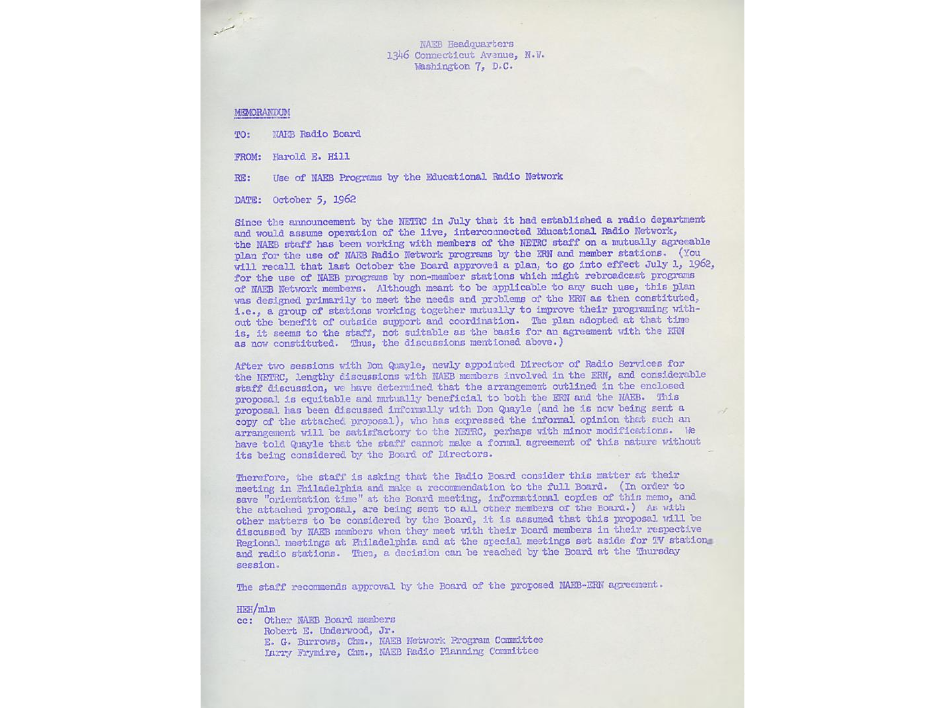
Memo RE Use of NAEB Programs by the Educational Radio Network: https://www.unlockingtheairwaves.org/document/naeb-b020-f06/#36
Radio typically was at best secondary to the mission of the NETRC, and the materials in these entities clarify how much its early ties to the NAEB hinged on the latter’s continued support of educational radio programming across the 1950s. The collaboration over radio often cemented ties between the two organizations—in 1955, for example, the ETRC board agreed the NAEB’s request to carry over unexpected funds to be used for radio programming in its next year’s budget—and served as a conduit to build relationships between the leadership of the two organizations.
National Organizations
Of the four national organizations promoting educational broadcasting in the 1950s, the NAEB was the oldest. The JCET had formed in 1950 to advocate for reserved channels for educational television stations. The ETRC was created in 1952, and by 1954 was distributing programming to educational television stations. The National Citizens Committee on Educational Television (NCCET), formed in 1952, was to build support—locally, regionally, nationally—for educational broadcasting. As early as March 1954, the NAEB leadership expressed concern about the proliferation of organizations, and the resources they drew from the Ford Foundation and the Fund for Adult Education.
Across the 1950s, leaders of the NAEB and the ETRC participated in a series of meetings with representatives from the other groups to address problems of duplicative activities, unclear jurisdictional boundaries, and competition over limited foundation funds. A more draconian meeting occurred in 1959, when James Armsey of the Ford Foundation threatened to withhold financial support from educational broadcasting until the distinct roles of each organization had been determined.
Throughout these conversations, leadership of the NAEB and ETRC often were aligned regarding how to reconfigure the organizational landscape. They agreed, for example, to an unrealized plan to reconstitute the JCET and expand its membership and to streamline the DC operations of the educational broadcasting movement through one office that would implement the decisions of a coordinate policy committee. Newburn also been open to a plan for the NAEB to helm campaigns for local television station activation, a process that the JCET and NCCET had had a hand in since the very early 1950s.
Yet simultaneously there were frictions. On a grant from the FAE, former NAEB President Burton Paulu traveled to Europe in 1959 to learn about European broadcasting. His letters back to his NAEB colleagues indicated confusion abroad over which organization—the ETRC, the NAEB, or the Broadcasting Foundation of America (BFA), which would be acquired by the Center in 1960—represented US educational television interests abroad. Paulu recommended that the NAEB cede ground to the NETRC and support its application for membership in the European Broadcasting Union (EBU), which would enable it to distribute European programs to US ETV stations.
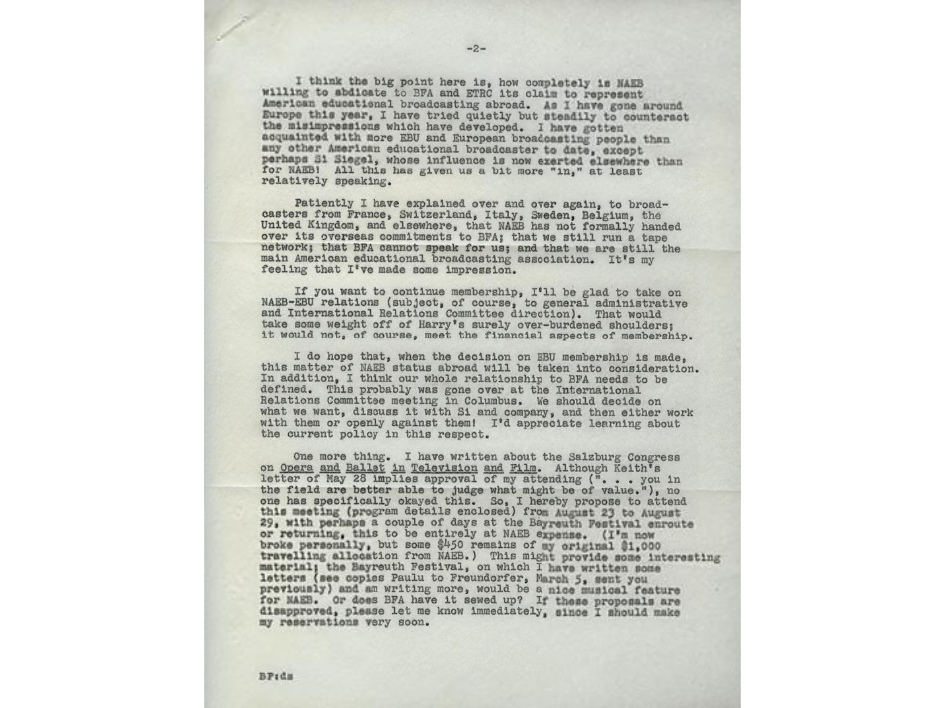
Paulu letter from Europe: https://www.unlockingtheairwaves.org/document/naeb-b070-f04/#231
Across the 1950s, leaders of the NAEB expressed palpable concern over the role and activities of other national educational broadcasting organizations, nearly all of whom it had helped to create. These groups had been formed to assure education’s role in US television—to secure resources and support for its development during the medium’s formative years—yet the scope and scale of their operations became a continued site of concern for the NAEB as it strove to maintain its prominence as the organization representing educational broadcasting interests.
Television
Perhaps the greatest question facing the NAEB in the 1950s would be its role in the educational television sector. Part of the answer would lay in its relationship with the Center. Materials I viewed in the Newburn entity indicate a series of productive meetings between the ETRC and NAEB leadership in the 1950s as they navigated the grants-in-aid program and the role of the NAEB advisory committee to the Center. Less clear is how the relationship changed after Newburn stepped down in 1958, but some documents give a clue.
A memo from Paulu to the NAEB Board of Directors Meeting, for example, report that WQED, the educational television station in Pittsburgh was withdrawing from NAEB membership. While the report listed dispute over “engineers salaries” as the given reason, Paulu surmised that the greater issue was that educational television stations, especially community stations, were not persuaded of the value of NAEB membership. Other community ETV stations, such as KQED, a community San Francisco station, also withdrew its station membership in 1962. John White, the president of the NETRC from 1958-1969 had been the general manager of WQED when it withdrew its membership; James Day, who would take over the Center’s leadership in 1969, had been general manager of KQED.
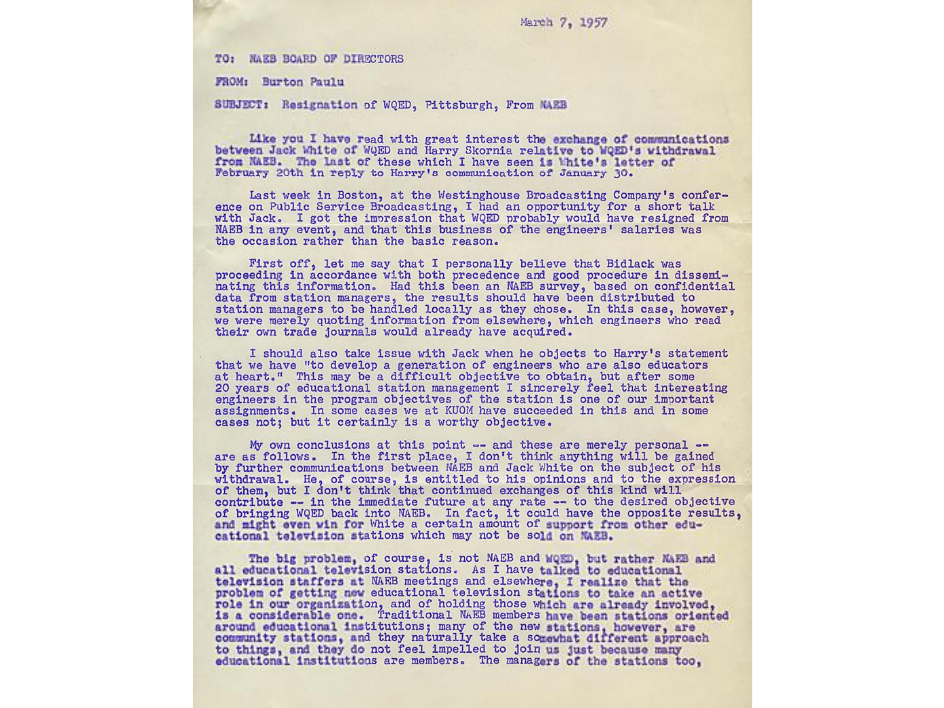
Memo from Paulu to Board: https://www.unlockingtheairwaves.org/document/naeb-b070-f04/#28
Additional materials in these entities underline the difficulty the NAEB had in persuading especially community ETV stations of its capacity to represent their interests. This challenge spoke to the perception, as expressed by John Schwarzwalder, that the NAEB was a midwestern social club focused for educational radio operators with little knowledge or interest in noncommercial telecasters whose roots were in community organizations rather than educational institutions. NAEB’s origins as an organization dedicated to educational uses of broadcasting rubbed up against a crop of influential educational television stations whose own understanding of the sociopolitical role of broadcasting was perhaps more expansive than that of the NAEB. It would be this vision that would guide the Center beginning with White’s leadership and continue during Day’s brief tenure.
Conclusion
My goal in examining the documents in these entities was to better understand the relationship between the Center and the NAEB. What I found was that while they give glimmers into how the ETRC changed across time, they most compellingly offer insight into the challenges faced by the NAEB as the educational broadcasting landscape shifted. The Center, for the NAEB, functioned intermittently as an example of its accomplishments in ETV, an institutional ally, and a collaborator on radio production. Yet there are hints of a more tumultuous relationship, one signaled by the NAEB’s tensions with some ETV stations and its perception that its contributions to the development of the educational television sector were overlooked or unappreciated by individuals and stations poised to lead within it.
***
Allison Perlman is an Associate Professor in the Departments of History and Film and Media Studies at the University of California, Irvine. She is the author of Public Interests: Media Advocacy and Struggles Over US Television (Rutgers UP, 2016), which won the Outstanding Book Prize from the Popular Culture Division of the International Communication Association. She is currently writing a history of National Educational Television (NET). In addition, she and Josh Shepperd are revising The History of Public Broadcasting for the Corporation of Public Broadcasting. She has served in leadership roles for the Library of Congress’ Radio Preservation Task Force and currently is the co-chair of the Scholars Advisory Committee for the American Archive for Public Broadcasting.
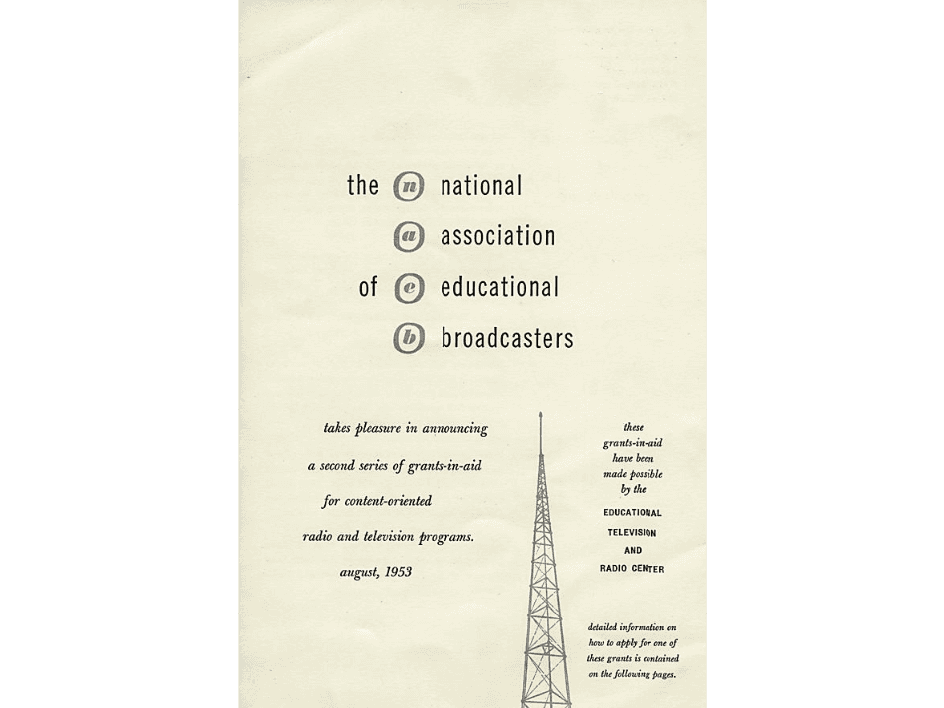
Brochure announcing the NAEB's grants-in-aid program. https://www.unlockingtheairwaves.org/document/naeb-b074-f02-17/
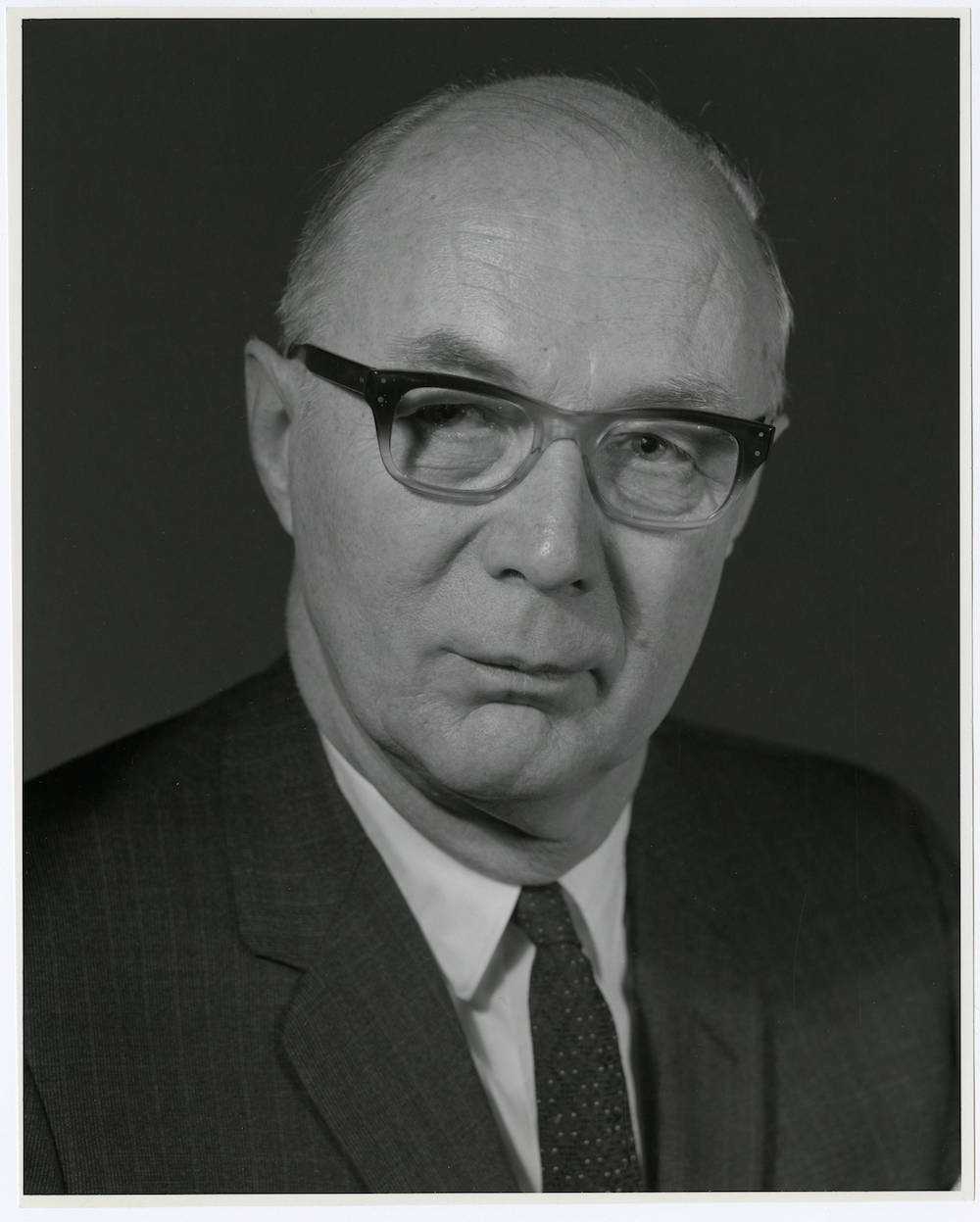
Portrait of Burton Paulu from 1970. https://umedia.lib.umn.edu/item/p16022coll175:15844